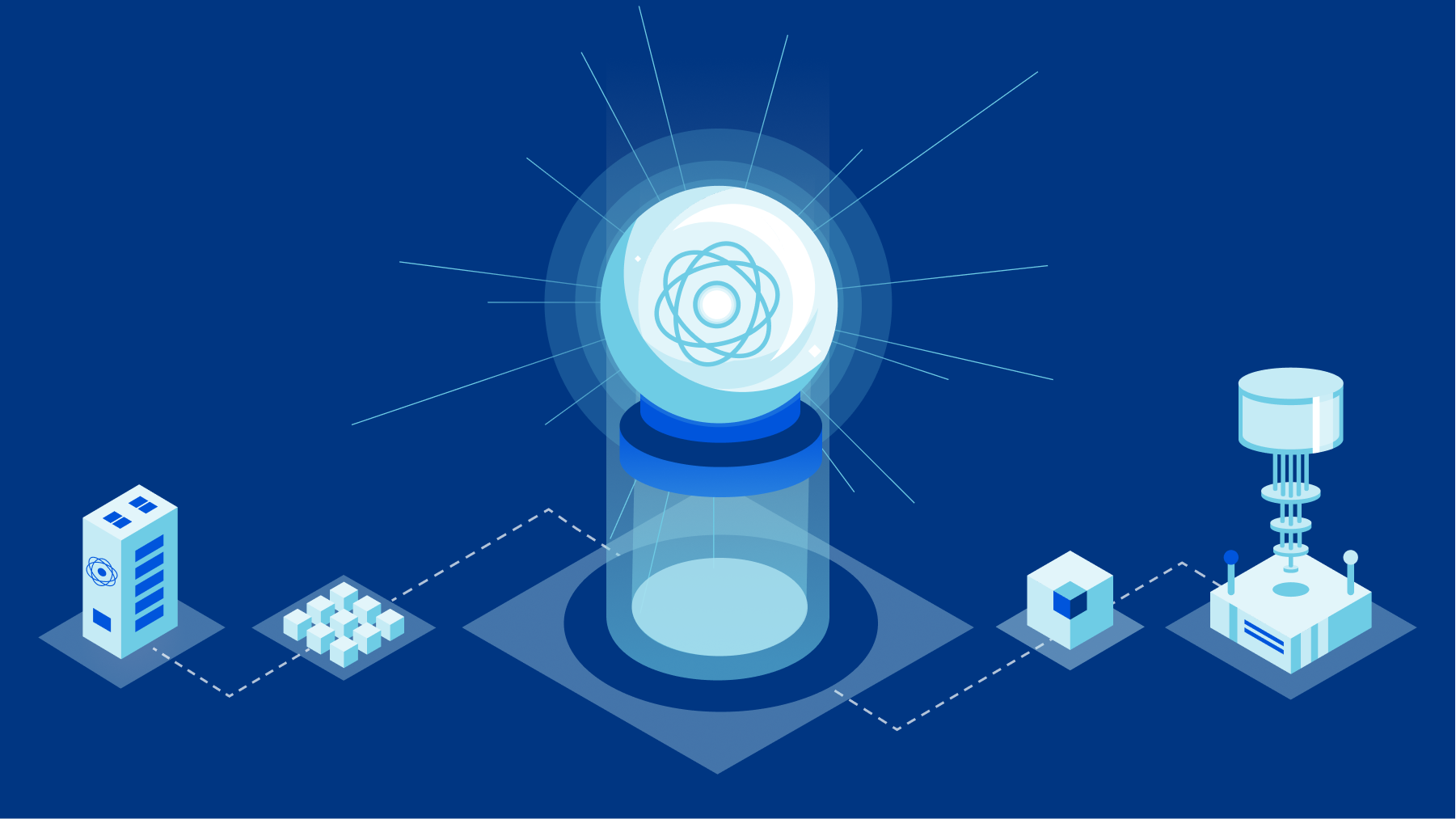Balancing AI Innovation and Tech Debt in the Cloud

While AI presents incredible opportunities for innovation, it also sheds light on the need to reevaluate existing governance awareness and frameworks to include AI-driven development. Historically DORA metrics were introduced to quantify elite engineering organizations based on two critical categories of speed and safety. Speed alone does not indicate elite engineering if the safety aspects are disregarded altogether. AI development cannot be left behind when considering the safety of AI-driven applications. Running AI applications according to data privacy, governance, FinOps and policy standards is critical now more than ever, before this tech debt spirals out of control and data privacy is infringed upon by machines that are no longer in human control. Data is not the only thing at stake, of course. Costs and breakage should also be a consideration. If the CrowdStrike outage from last month has taught us anything it’s that even seemingly simple code changes can bring down entire mission-critical systems at a global scale when not properly released and governed. This involves enforcing rigorous data policies, cost-conscious policies, compliance checks and comprehensive tagging of AI-related resources.
AI and Evolving Legislation in the US and Abroad

The best way to prepare for regulatory changes is to get your house in order.
Most crucial is having an AI and data governance structure. This should be part
of the overall product development lifecycle so that you’re thinking about how
data and
AI
is being used from the very beginning. Some best practices for governance
include: Forming a cross-functional committee to evaluate the strategic use of
data and AI products; Ensuring you have experts from different domains working
together to design algorithms that produce output that is relevant, useful and
compliant; Implementing a risk assessment program to determine what risks are at
issue for each use case; Executing an internal and external communication plan
to inform about how AI is being used in your company and the safeguards you have
in place. AI has become a significant, competitive factor in product
development. As businesses develop their AI program, they should continue to
abide by responsible and ethical guidelines to help them stay compliant with
current and emerging legislation. Companies that follow best practices for
responsible use of AI will be well-positioned to navigate current rules and
adapt as regulations evolve.
The paradox of chaos engineering

Although chaos engineering offers potential insights into system robustness,
enterprises must scrutinize its demands on resources, the risks it introduces,
and its alignment with broader strategic goals. Understanding these factors is
crucial to deciding whether chaos engineering should be a focal area or a
supportive tool within an enterprise’s technological strategy. Each enterprise
must determine how closely to follow this technological evolution and how long
to wait for their technology provider to offer solutions. ... Chaos
engineering offers a proactive defense mechanism against system
vulnerabilities, but enterprises must weigh its risks against their strategic
goals. Investing heavily in chaos engineering might be justified for some,
particularly in sectors where uptime and reliability are crucial. However,
others might be better served by focusing on improvements in cybersecurity
standards, infrastructure updates, and talent acquisition. Also, what will the
cloud providers offer? Many enterprises get into public clouds because they
want to shift some of the work to the providers, including reliability
engineering. Sometimes, the shared responsibility model is too focused on the
desire of the cloud providers rather than their tenants. You may need to step it up, cloud providers.
Generative AI vs large language models: What’s the difference?

While generative AI has become popular for content generation more broadly,
LLMs are making a massive impact on the development of chatbots. This allows
companies to provide more useful responses to real-time customer queries.
However, there are differences in the approach. A basic generative AI
chatbot, for example, would answer a question with a set answer taken from a
stock of responses upon which it has been trained. Introducing an LLM as
part of the chatbot set-up means its response will become much more detailed
and reactive and just like the reply has come from a human advisor, instead
of from a computer. This is quickly becoming a popular option, with firms
such as JP Morgan embracing LLM chatbots to improve internal productivity.
Other useful implementations of LLMs are to generate or debug code in
software development or to carry out brainstorms or research tasks by
tapping into various online sources for suggestions. This ability is made
possible by another related AI technology called retrieval augmented
generation (RAG), in which LLMs draw on vectorized information outside of
its training data to root responses in additional context and improve their
accuracy.
Agentic AI: Decisive, operational AI arrives in business

Agentic AI, at its core, is designed to automate a specific function within
an organization’s myriad business processes, without human intervention. AI
agents can, for example, handle customer service issues, such as offering a
refund or replacement, autonomously, and they can identify potential threats
on an organization’s network and proactively take preventive measures. ...
Cognitive AI agents can also serve as assistants in the healthcare setting
by engaging with a patient daily to support mental healthcare treatment, and
as student recruiters at universities, says Michelle Zhou, founder of Juji
AI agents and an inventor of IBM Watson Personality Insights. The AI
recruiter could ask prospective students about their purpose of visit,
address their top concerns, infer the students’ academic interests and
strengths, and advise them on suitable programs that match their interests,
she says. ... The key to getting the most value out of AI agents is getting
out of the way, says Jacob Kalvo, co-founder and CEO of Live Proxies, a
provider of advanced proxy solutions. “Where agentic AI truly unleashes its
power is in the ability to act independently,” he says.
Protecting E-Commerce Businesses Against Disruptive AI-driven Bot Threats
Bot attacks have long been a thorn in the side of e-commerce platforms. With
the growing number of shoppers regularly interacting and sharing their data
on retail websites combined with high transaction volumes and a growing
attack surface, these online businesses have been a lucrative target for
cybercriminal activity. From inventory hoarding, account takeover, and
credential stuffing to price scraping and fake account creation, these
automated threats have often caused significant damage to e-commerce
operations. By using a variety of sophisticated evasion techniques in
distributed bot attacks such as rapidly rotating IPs and identities and
manipulating HTTP headers to appear as legitimate requests, attackers have
been able to evade detection by traditional bot detection tools. ...
With the evolution of Generative AI models and its increasing adoption by
bot operators, bot attacks are expected to become even more sophisticated
and aggressive in nature. In the future, Gen AI-based bots could be able to
independently learn, communicate with other bots, and adapt in real-time to
an application’s defensive mechanisms.
How copilot is revolutionising business process automation and efficiency

Copilot is essential for optimising operations in addition to increasing
productivity. Companies frequently struggle with inefficiencies brought on
by human error and manual processes. Copilot ensures seamless operations and
lowers the possibility of errors by automating these activities. For
instance, automation of customer service. According to a survey, 72% of
consumers believe that agents should automatically be aware of their
personal information and service history. Customer relationship management
(CRM) systems can incorporate Copilot to give agents real-time information
and recommendations, guaranteeing a customised and effective service
experience. The efficiency of customer support operations is further
enhanced by intelligent routing of questions and automated responses.
... For example, Copilot can forecast performance, assess market
trends, and provide investment recommendations in the financial industry.
Deloitte claims that artificial intelligence (AI) can save operating costs
in the finance sector by as much as 20%. Copilot’s automated data analysis
and accurate recommendation engine help financial organisations remain ahead
of the curve and confidently make strategic decisions.
Is your data center earthquake-proof?

Leuce explains that when Colt DCS designs the layout of a data center, it
ensures the most critical parts, such as the data halls, electrical rooms,
and other ancillary rooms required for business continuity, are placed on
the isolation base. Other elements, such as generators, which are often
designed to withstand an earthquake, can then be placed directly on the
ground. ... A final technique employed by Colt DCS is the use of dampers –
hydraulic devices that dissipate the kinetic energy of seismic events and
cushion the impact between structures. Having previously deployed lead
dampers at its first data center in Inzai, Japan, Colt’s has gone a step
further at its most recently built facility in Keihanna, Japan, where it is
using a combination of an oil damper made out of naturally laminated rubber
plus a friction pendulum system, a type of base isolation that allows you to
damp both vertically and horizontally. “The reason why we mix the friction
pendulum with the oil damper is because with the oil damper, you can
actually control the frequency in the harmonics pulsation of the building,
depending on the viscosity of the oil, while the friction pendulum does the
job of dampening the energy in both directions, so you bring both
technologies together,” Leuce explains.
Digital IDV standards, updated regulation needed to fight sophisticated cybercrime

In the face of rising fraud and technological advancements, there is a
growing consensus on the need for innovative approaches to financial
security. As argued in a recent Forbes article, the upcoming election season
presents an opportunity to rethink the ecosystem that supports financial
innovation. In the article, Penny Lee, president and CEO of the Financial
Technology Association (FTA), advocates for policies that foster
technological advancements while ensuring robust regulatory frameworks to
protect consumers from emerging threats. ... Amidst these challenges, the
payments industry is experiencing a surge in innovation aimed at combating
fraud and enhancing security. Real-time payments and secure digital identity
systems are at the forefront of these efforts. The U.S. Payments Forum
Summer Market Snapshot highlights a growing interest in real-time payments
systems, which enable instant transfer of funds and provide businesses and
consumers with immediate access to their money. These systems are designed
to improve cash flow management and reduce the risk of fraud through
enhanced authentication measures.
Transformer AI Is The Heathcare System's Way Forward
Transformer-based LLMs are adapting quickly to the amount of medical
information the NHS deals with per patient and on a daily basis. The size of
the ‘context windows’, or input, is expanding to accommodate larger patient
files, critical for quick analysis of medical notes and more efficient
decision making by clinical teams. Beyond speed, these models serve well for
quality of output, which can lead to more optimal patient care. An
‘attention mechanism’ learns how different inputs relate to each other. In a
medical context, this can include the interactions of different drugs in a
patient’s record. It can find relationships between medicines and certain
allergies, predicting the outcome of this interaction on the patient’s
health. As more patient records become electronic, the larger training sets
will allow LLMs to become more accurate. These AI models can do what takes
humans hours of manual effort – sifting through patient notes, interpreting
medical records and family history and understanding relationships between
previous conditions and treatments. The benefit of having this system in
place is that it creates a full, contextual picture of a patient that helps
clinical teams make quick decisions about treatment and counsel.
Quote for the day:
"Are you desperate or determined?
With desperation comes frustration; With determination comes purpose
achievement, and peace." -- James A. Murphy



































